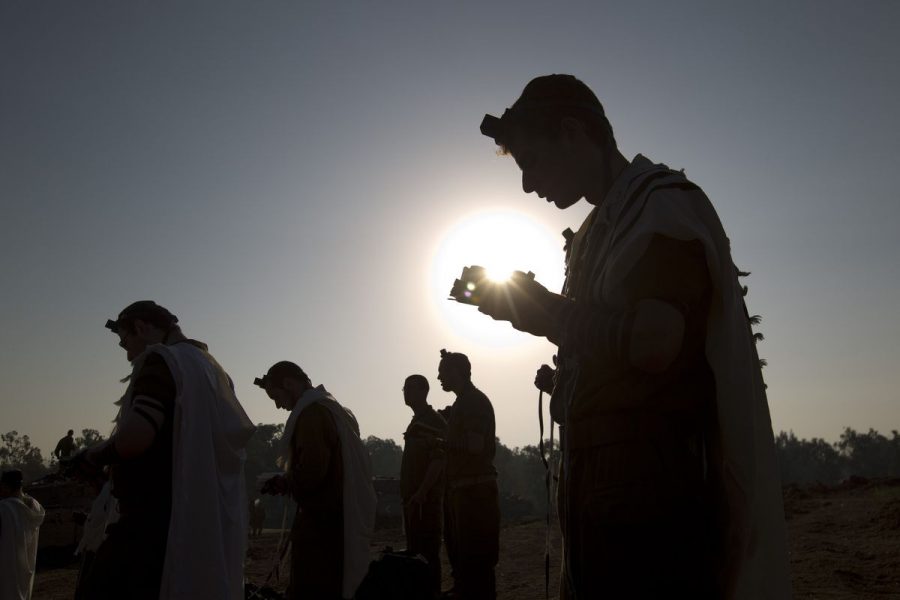Our Eyes Were Watching God: A Reaction to the Joint Minyan
A large public outcry ensued at the beginning of the school year from the announcement that juniors and seniors would be davening together in the lunchroom. Aside from the darkness and dimensions of that small room, exacerbated by the now doubled number of people, I was one of the few people to actually receive this news with a sigh of relief. Having sat through three years of my grade’s minyan, I get why the administration decided to combine the two minyanim. From my standpoint (and probably the faculty’s), there was nothing worse than arriving at 8 AM on a Monday morning to face a handful of kids — everyone else was either late or didn’t show up — shouting across the room to each other when they were supposed to be davening. The boys who would lead sped through the service, so much so that they’d stumble over their own words when reading brachot, and the room either swelled with rowdy chatter or sank in awkward silence. Every two minutes, davening would stop for an additional five so that whoever was supervising could tell us how disrespectful we were. Most times, we would need to wait an extra six minutes just to get a minyan in order to be able to say the kaddish leading into shema.
Some members of both the junior and senior grades have objected to this new arrangement, so much so that it’s been brought up as a topic in SFAC. There have been some junior girls who have argued that the senior grade doesn’t daven, and both grades have complained that having the two grades together slows the minyan down. But relative to what it was, this minyan is much more enjoyable for me. The junior girls daven nicely and help widen the spaces between the senior girls who might be prone to talking. Now, we never need to wait ten minutes to have a minyan or to find a boy willing to lead shacharit, and there is just an atmosphere in the room much more conducive to thoughtful prayer.
It’s important to be in a room with “dignity,” as Rabbi Slomnicki used to tell us. There seems to be a problem in general getting female faculty to daven with the girls, and rabbis are often reluctant to discipline people on the other side of the mechitza. Last year, the junior grade (this year’s seniors) had no female faculty in davening, and the women’s section was on the whole a disaster. By having the two grades together, the school is killing two birds with one stone: both grades now have adequate female supervision, switching off between Ms. Gedweiser and Ms. Krupka.
Davening in general is difficult, and davening on five hours of sleep with a test hanging over one’s head is even harder. But davening in a room where the general attitude toward davening is one of disrespect is impossible. So what if we lose five minutes of study time? Last-minute studying has been proven ineffective at any rate. All I know is that I sat in davening last year and started to hate davening and Judaism as an extension of that. Now, at least, I walk into the room, and there’s already a minyan, a boy willingly standing at the bima to lead birkot hashachar. The girls around me are davening, and I sometimes find the strength to pull myself out of my exhausted trance and pray with them. As a senior, I’m not sure whether I’ll take a gap year, so this may be the last year I’ll have davening built into my school schedule, and I don’t want to leave thinking that it’s something I won’t miss; rather, it should be something I’m inclined to do even after I leave Ramaz. Whatever other students may say, this year’s combined minyan isn’t perfect – yes, it’s long and boring – but it is a step toward that goal.

Natalie Kahn joined The Rampage staff as a freshman and wrote numerous articles before becoming Co Editor-in-chief this year. Natalie is a skilled writer...




